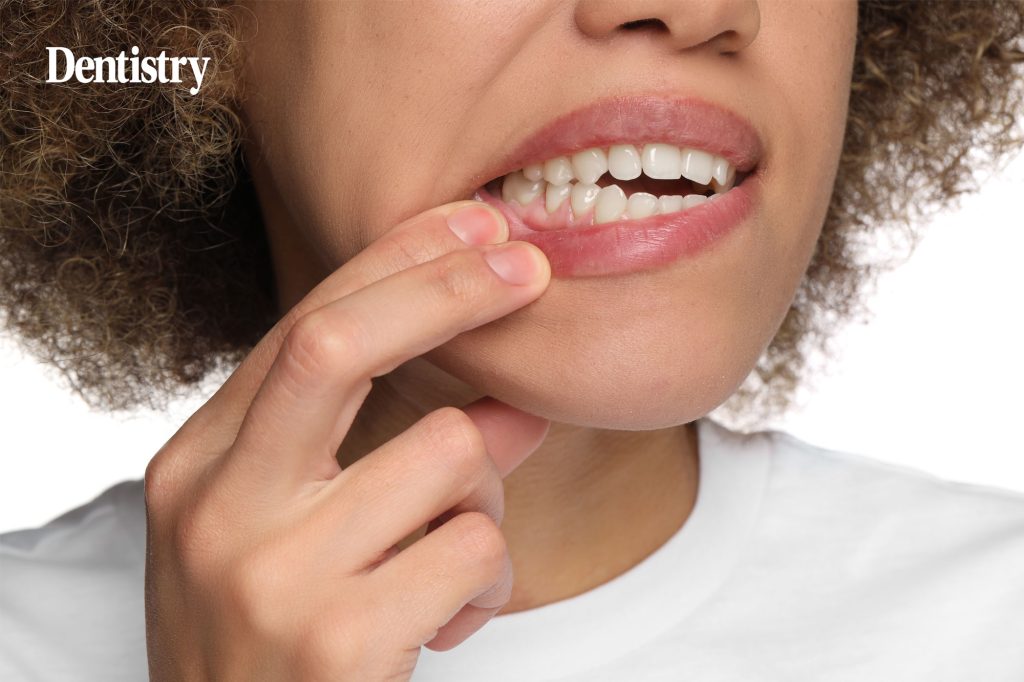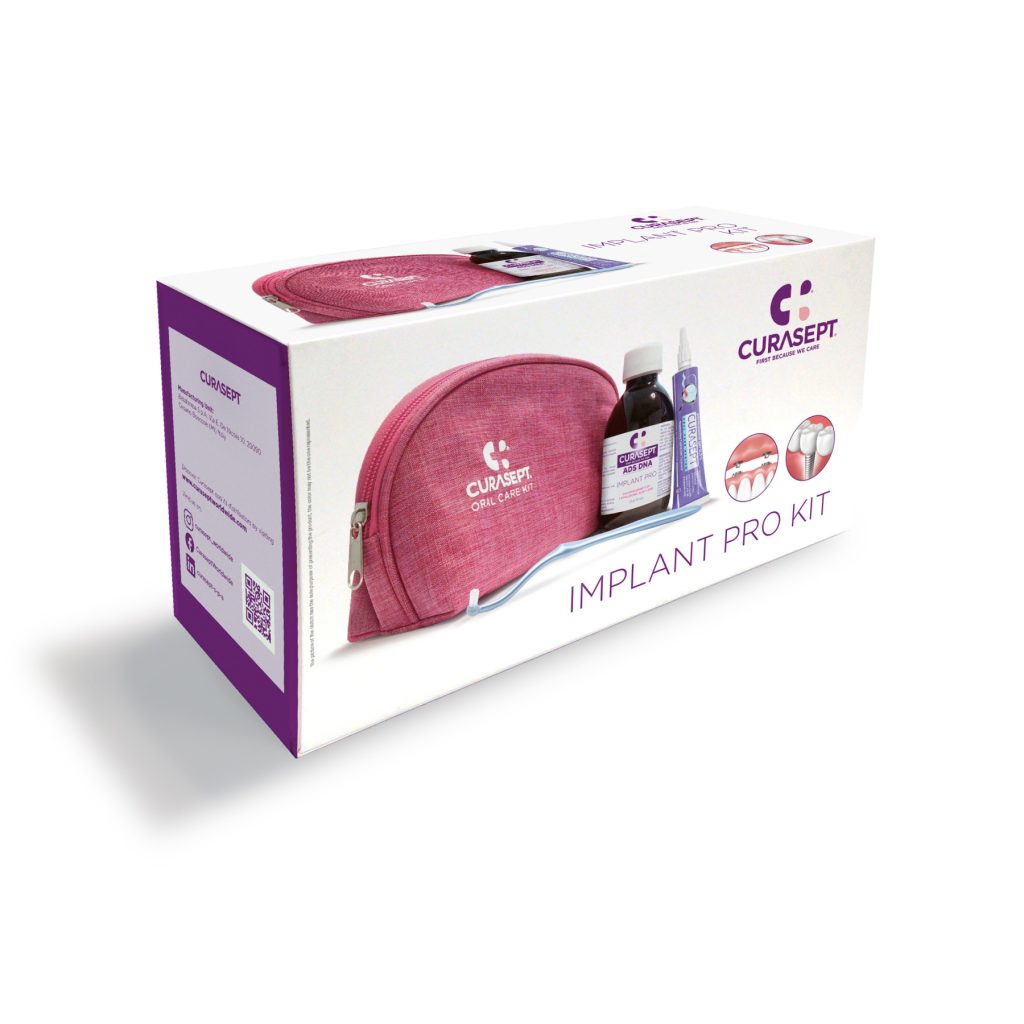
J&S Davis shares guidance for preventing peri-implantitis in dental patients, from oral hygiene advice to the best preventive products.
As a dental professional, preventing complications is always key for successful treatment outcomes and patient satisfaction. Because of this, teaching your patients excellent oral hygiene techniques and monitoring their hygiene at regular appointments is a priority. This is particularly important for patients who have gingivitis, periodontitis, or who are receiving dental implants.
With the popularity of dental implant treatment rapidly increasing, it is more important than ever for clinicians to understand how to prevent complications from developing. Dental implants are often chosen as they provide a long-lasting solution for missing teeth. However they will need appropriate care and maintenance for successful osseointegration (Rehman et al, 2021).
Bacterial plaque and peri-implantitis
In a healthy mouth, plaque and soft tissues maintain a balance. However, changes during the disease process transform healthy dental plaque into a pathogenic biofilm (Seneviratne et al, 2011).
When bacterial plaque is allowed to build up, microbial homeostasis can break down. This change in the mouth means ecological stability is disrupted and, consequently, disease develops.
Ecological pressure alongside a low pH, sugar rich diet, and low saliva flow create perfect conditions for disease (Marsh, 2006). An obvious symptom of oral disease is inflammation of the soft tissue in response to bacterial plaque. Gingival crevicular fluid is increased in response to the inflammation of the periodontal tissues – this leads to a rise in the local pH, which in turn allows bacteria to grow even more (Seneviratne et al, 2011).
Bacterial plaque not only causes gingivitis and periodontitis, but can also lead to the development of peri-implantitis (Kurzman and Silverstein, 2007). As well as this, previous history of periodontitis, poor oral hygiene, and smoking are considered potential risk factors for peri-implantitis development (Pranskunas et al, 2016).
Peri-implant diseases are common, with in between 28% and 56% patients developing peri-implantitis (Lindhe et al, 2008). So clinicians should be sure patients are aware of the need to remove plaque effectively, and look out for any signs of inflammation, gingival bleeding and pus, as well as pain, which may indicate peri-implantitis development.
The importance of good oral hygiene
Preventing peri-implantitis always needs to be a collaborative effort between the dental team and the patient. It is essential that patients understand that their daily oral hygiene habits are of utmost importance when it comes to maintaining healthy implants and preventing infection (Caporaso et al, 2022).
As too are regular dental check-ups with their dentist, and routine appointments with their hygienists for mechanical debridement and oral hygiene instruction – which may include demonstrating correct brushing techniques, the use of interproximal brushes and discussions around the use of chlorhexidine-based toothpastes and mouthwashes.
Combine clinical efficacy and patient compliance
To elevate patients’ oral hygiene habits at home, particularly when recovering from dental implant placement or when supporting them through the initial stages of peri-implantitis, the use of Curasept ADS Implant Pro Oral Rinse could offer significant benefits.

This mouthwash contains 0.20% anti-staining chlorhexidine for all of the anti-bacterial and anti-plaque benefits of chlorhexidine – but with dramatically reduced tooth pigmentation and taste disruption. It also contains DNA (from radish roots) which helps to reduce inflammation and boost tissue regeneration at a bio-cellular level for accelerated healing, as well as hyaluronic acid which soothes away pain and forms a film over the wound to protect it from irritations.
In addition to Curasept ADS Implant Pro, patients would also benefit from the daily use of Curasept ADS Regenerating Gel. Applied gently and directly to the wound up to four times per day, this topical gel contains 0.50% anti-staining chlorhexidine for intense anti-bacterial action as well as hyaluronic acid to help soothe and protect the wound, and a PVP-VA co-polymer – which makes the gel super sticky so that it stays exactly where it is placed.
Both of these products can be purchased individually via any dental dealer, or you can get them in a convenient, professional looking, Curasept Implant Pro Kit. Each kit contains one bottle of Curasept ADS Implant Pro Oral Rinse, one tube of Curasept ADS Regenerating Gel, one Curasept Implant toothbrush and one Oral care bag. RRP is just £12.80+VAT each. They are available on an offer of buy 12 and get three additional kits free of charge.
For more information and to request samples, please click here or call 01438 747 344.
References
- Rehman, Ilyaas, Fatima Elmahgoub, and Christine Goodall. ‘Evaluation of the information provided by UK dental practice websites regarding complications of dental implants.’ British Dental Journal 230.12 (2021): 831-834. https://eprints.gla.ac.uk/245048/2/245048.pdf
- Seneviratne, Chaminda Jayampath, Cheng Fei Zhang, and Lakshman Perera Samaranayake. ‘Dental plaque biofilm in oral health and disease.’ Chinese Journal of Dental Research 14.2 (2011): 87. http://www.quintpub.com/userhome/cjdr/cjdr_2011_02_s0087.pdf
- Marsh, Philip D. ‘Dental plaque as a biofilm and a microbial community–implications for health and disease.’ BMC Oral health. Vol. 6. No. 1. BioMed Central, 2006. https://bmcoralhealth.biomedcentral.com/articles/10.1186/1472-6831-6-S1-S14
- Kurtzman, Gregori, and L. H. Silverstein. ‘Dental implants: oral hygiene and maintenance.’ Implant Dent Today 1.3 (2007): 48-53. http://www.centrefordentalimplant.com/wp-content/uploads/2011/11/Dr.-Gregori-M.-Kurtzman.pdf
- Pranskunas, Mindaugas, et al. ‘Influence of peri-implant soft tissue condition and plaque accumulation on peri-implantitis: a systematic review.’ Journal of oral & maxillofacial research 7.3 (2016). https://www.ncbi.nlm.nih.gov/pmc/articles/PMC5100642/pdf/jomr-07-e2.pdf
- Lindhe, Jan, Joerg Meyle, and Group D of the European Workshop on Periodontology. ‘Peri‐implant diseases: consensus report of the sixth European workshop on periodontology.’ Journal of clinical periodontology 35 (2008): 282-285. https://biblio.ugent.be/publication/515604/file/516754.pdf
- Caporaso, Lucia, et al. ‘The Importance of The Dental Hygienist in Implantology: A Narrative Review.’ Journal of Multidisciplinary Applied Natural Science 2.1 (2022): 19-22. https://pandawainstitute.com/journal/index.php/jmans/article/download/94/62
This article is sponsored by J&S Davis.
Adblock test (Why?)






